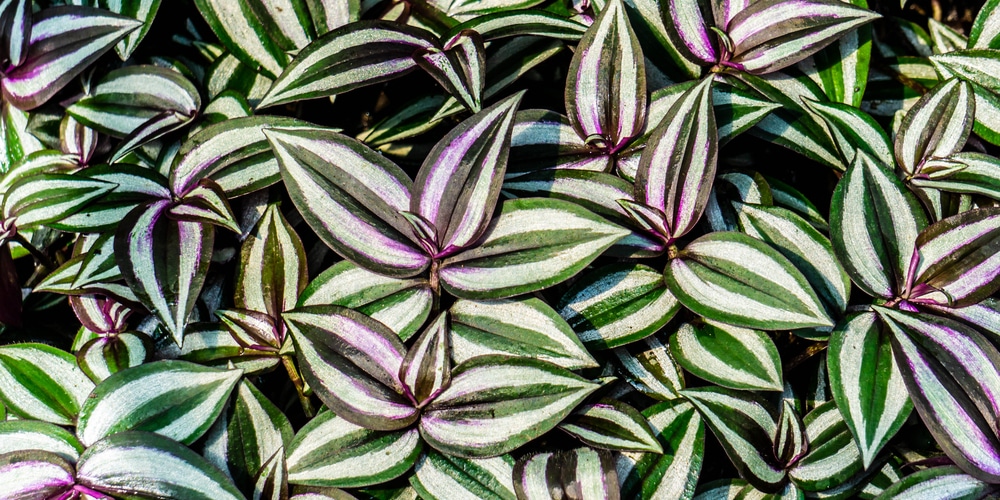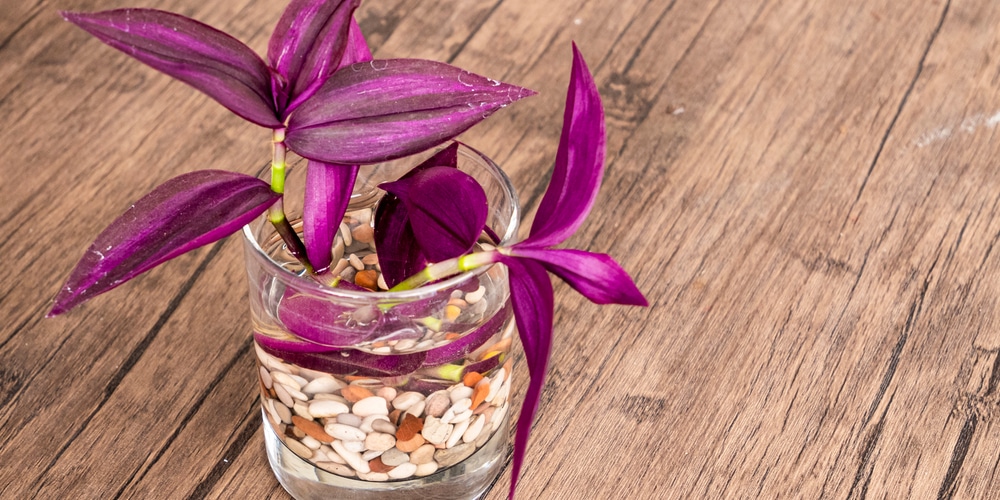When it comes to hanging houseplants that are vibrant, colorful, and easy to grow, few things come close to the Tradescantia Zebrina (better known as the wandering Jew – I’ll get into the history of the name below). It is a beautiful plant for both indoor and outdoor use.
The origins of “wandering Jew” are thought to date from the 19th century, though the precise dates and intentions behind the epithet are uncertain. The expression likely comes from a mythical Jewish character cursed to roam the Earth until Jesus Christ’s Second Coming.
In more contemporary times, the term has also been used less pejoratively as a metaphor for Jewish wanderings through the wilderness and the perseverance and resilience of the Diaspora culture.
Interesting context aside, you came here to see exactly why your wandering Jew is losing its color. There are a multiplicity of reasons this could be the case, all of which will be outlined below.
Not Enough Sunlight
If your wandering Jew loses its color, this could mean it is receiving little to no sunlight, and the leaves will soon wither and no longer bloom.
If you notice that the markings on the leaves are fading, move the plant to a lighter place. If your wandering Jew is growing in too low of light conditions, the leaves will quickly begin to lose their color and become duller.
After ensuring enough sunlight, keep an eye out for dead leaves or stems, as they can cause the plant to accelerate its color loss. If you wish, you can carefully trim the scorched spots on the leaves to make your wandering Jew plants look healthier and can focus on producing healthy new shoots.
Wandering Jews need light to keep their color vibrant, but remember that direct sunlight will burn their leaves (except for the purple queen, they love to grow in full sun!).
Yellow Discoloration
If the leaves of your wandering Jew plant turn yellow, try placing the plant in a lighter spot and allowing the soil to dry out more between waterings. If you notice yellowing of the leaves, take steps to address the issue to keep your plant healthy and vibrant.
Wandering Jew plants do well in medium to bright light and prefer moist soil, but too much water can cause leaves to turn yellow and fall off. If you notice a yellow discoloration in the leaves, be sure to regulate the amount of water the plant receives.
Pests
Pests can also cause leaf discoloration as they suck the sap from the plant. However, it can also be caused by poor lighting (the variegation will also fade), regular under-watering (accompanied by yellowing of the leaves), or insufficient fertilizer.
Too Hot or Cold
Losses can also occur when the plant is too hot or cold to grow variegated leaves. Be sure the plant is kept in an environment from around 50 F to 85 F, as any temperature outside this range can negatively impact the plant’s health and look.
Waterlogging
If the plant has plenty of light but spots and sluggish stalks appear on the leaves, this may be due to waterlogging. Without enough sunlight, the leaves tend to wilt, and the plant may stop blooming. If the wandering Jew loses its color and there is no sunlight, the leaves will wither and no longer bloom.
Wrapping Up
You found a colorful plant and brought it home. Two days later, the leaves are now wilted and discolored. What happened?
There are a variety of causes for a wilted and discolored wandering Jew. Hopefully, this article provides some context on why your plant may be losing color.

